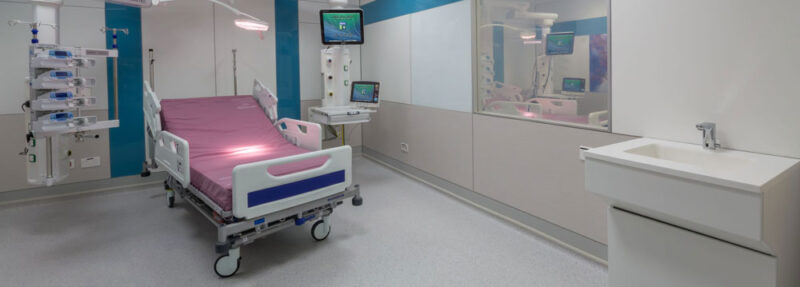A Focus on Isolation Rooms in Nursing
The COVID-19 pandemic has left an indelible mark on healthcare systems worldwide, dramatically reshaping the healthcare environment. One significant aspect that has been profoundly affected is the design and utilisation of isolation rooms in nursing. These specialised spaces have played a crucial role in controlling the spread of the virus, protecting healthcare workers and patients alike. In this blog post, we will explore the impact of COVID-19 on the healthcare environment and specifically delve into the importance of isolation rooms in nursing.

The Emergence of Isolation Rooms
Isolation rooms have long been a staple in healthcare facilities, primarily used to contain infectious diseases and prevent their transmission. However, the COVID-19 pandemic brought a renewed focus on the design, implementation, and utilisation of these specialised spaces. The highly contagious nature of the SARS-CoV-2 virus necessitated dedicated areas to isolate infected patients effectively.
Enhanced Infection Control Measures
The impact of COVID-19 on healthcare environments prompted a reevaluation of infection control measures. Isolation rooms have become a vital component in minimising the risk of transmission within hospitals and nursing homes. These rooms are designed to meet specific criteria, including negative air pressure, proper ventilation, and isolation precautions, such as the use of personal protective equipment (PPE).
Negative Air Pressure
Negative air pressure plays a crucial role in containing infectious particles within an isolation room. By maintaining a pressure gradient that prevents air from flowing out into the surrounding areas, potentially contaminated air is effectively contained. This feature, coupled with appropriate ventilation, ensures that airborne pathogens are effectively removed from the room, reducing the risk of transmission to other patients and healthcare personnel.
Proper Ventilation
Adequate ventilation is vital in isolation rooms to mitigate the risk of airborne transmission. The air inside these rooms is exchanged more frequently, reducing the concentration of infectious particles. Efficient ventilation systems, combined with appropriate filtration, help maintain a safe and controlled environment.
Isolation Precautions
In addition to physical design elements, strict isolation precautions are implemented in isolation rooms to further minimise the spread of infections. Healthcare workers adhere to meticulous hand hygiene protocols and wear appropriate PPE, including masks, gowns, gloves, and face shields. These precautions create an additional barrier of protection for both healthcare providers and patients.
Improved Communication Technology
The impact of COVID-19 has spurred advancements in healthcare technology, particularly in the realm of telemedicine and remote patient monitoring. Isolation rooms have become equipped with enhanced communication systems, allowing healthcare providers to remotely monitor patients’ vital signs, communicate with them, and conduct virtual consultations. These technologies not only reduce the need for direct contact but also facilitate more efficient and timely healthcare delivery.
Psychological and Emotional Considerations
While the primary goal of isolation rooms is to prevent the transmission of infectious diseases, it is essential to acknowledge the psychological and emotional impact they can have on patients. The isolation experienced by patients in these rooms can lead to feelings of loneliness, anxiety, and depression. Healthcare providers must address these concerns by providing additional support and utilising various strategies to mitigate the psychological impact of isolation.
The COVID-19 pandemic has had a profound impact on the healthcare environment, particularly in terms of the design and utilisation of isolation rooms in nursing. These rooms have become critical in curbing the spread of infectious diseases and protecting both patients and healthcare workers.
Through enhanced infection control measures, including negative air pressure, proper ventilation, and isolation precautions, these specialised spaces help contain and manage the spread of the virus. Moreover, advancements in communication technology and increased attention to psychological considerations have further improved the care provided within isolation rooms.
As we navigate the ongoing challenges presented by COVID-19, the lessons learned from this experience will undoubtedly shape the future of healthcare environments, ensuring the continued safety and well-being of patients and healthcare providers alike.